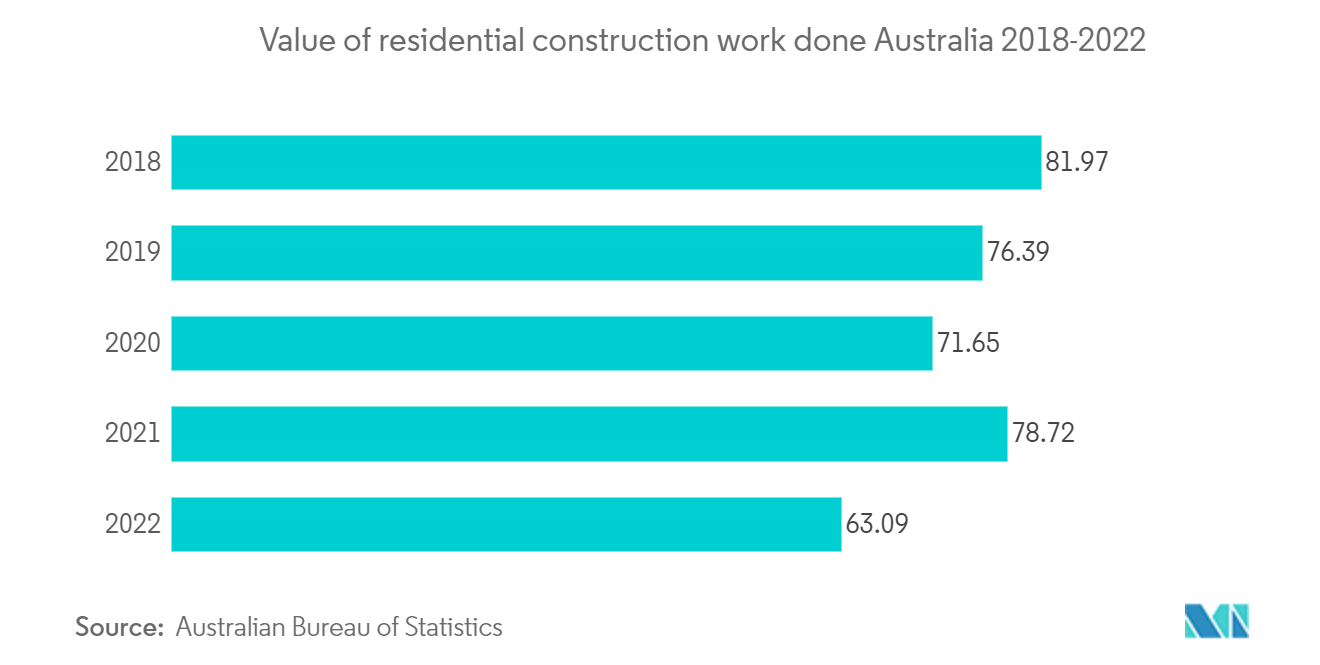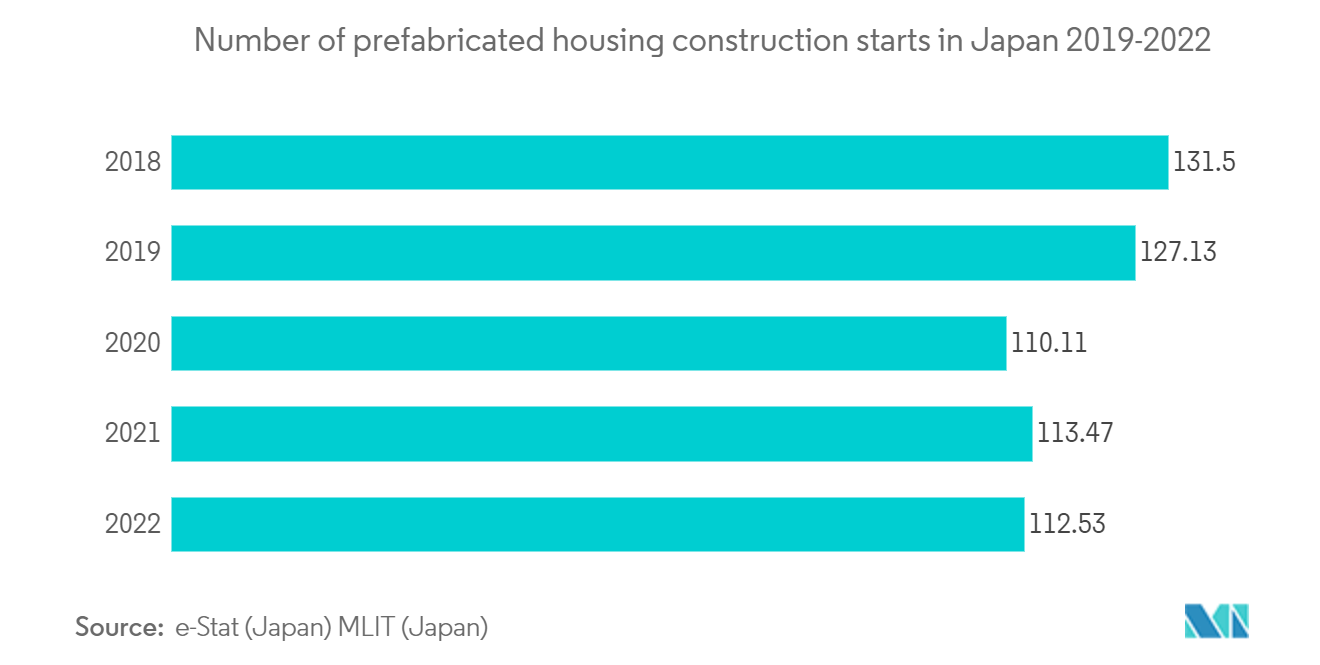Market Trends of Asia Pacific Manufactured Homes Industry
This section covers the major market trends shaping the APAC Manufactured Homes Market according to our research experts:
Investment to Support the Growth and Innovation in the Housing Sector in Australia
In Australia, there are about 40 not-for-profit organizations that have recently produced affordable homes for lower-income households and are looking to extend this service. There are eleven prominent not-for-profit developers in this category, all of whom have a strong track record and recent expansion. Leading Australian not-for-profit developers are starting to build their skills in creating a range of cost-effective, purpose-designed affordable housing options that have the consent of their tenants.
All Australian governments have lately taken steps to implement financing, legislative, and regulatory methods that let not-for-profit organizations build affordable homes. Although activity levels vary between jurisdictions, governmental funding has typically not been adequate to provide a huge volume of supply or significantly increase private investment. This developing activity might be given more momentum in Australia by new Commonwealth measures, such as providing a larger financial incentive and pushing for nationally consistent regulation of the not-for-profit sector.
All Australian governments have lately taken steps to implement financing, legislative, and regulatory methods that let not-for-profit organisations build affordable homes.Although activity levels vary between jurisdictions, governmental funding has typically not been adequate to provide a huge volume of supply or significantly increase private investment. This developing activity might be given more momentum in Australia by new Commonwealth measures, such as providing a larger financial incentive and pushing for nationally consistent regulation of the not-for-profit sector.
The Australian government pledged help for the building, construction, and manufacturing industries, as well as support for the prefabricated building sector. It has announced the opening of a new collaboration lab to assist manufacturers in creating novel prefabricated buildings that are more economical and environmentally sustainable while also drastically cutting down on construction time.
The Australian government gave USD 21.27 million to PrefabAus, the industry's trade association, to improve structures and make them more affordable, effective, and secure. This programme will result in a 40% reduction in project delays, a 50% reduction in CO2 emissions, and an 80% reduction in building waste. The Australian Research Council made a sizeable investment in the ARC Training Centre for Advanced Manufacturing of Prefabricated Housing, which is run by the University of Melbourne and has received financing of USD 6 million over four years.

Japan’s prefabricated-housing industry is a world leader in innovation
In Japan, prefabricated building accounts for 15% of all new dwelling construction. Japanese families who employ prefabricated constructions frequently rebuild their homes every 30 years because they view them as depreciating, even though they are intended to endure between 50 and 100 years. While the use of prefabricated building varied by country, it has gained popularity in some markets, such as Japan, which has benefited from connections with other industrial sectors.
Prefabricated dwelling units made up about the same percentage of all Japanese construction buildings over the study period-between 14% and 15%. As of 2019, Tokyo (18,683 units) had the most prefabricated buildings in Japan, followed by Kanagawa (10,864 units), Aichi (10,655 units), Chiba (8,970 units), and Saitama (8,898 units).
With effective production methods, targeted marketing strategies, consumer engagement, and high-quality designs that offer diversity and flexibility at competitive rates, Japan's manufactured home business is a global pioneer in innovation. Customers can design their homes with standardised components thanks to a completely computerised system. Contrary to popular belief in the West, factory-built homes in Japan are seen as being superior than those that are traditionally constructed.


